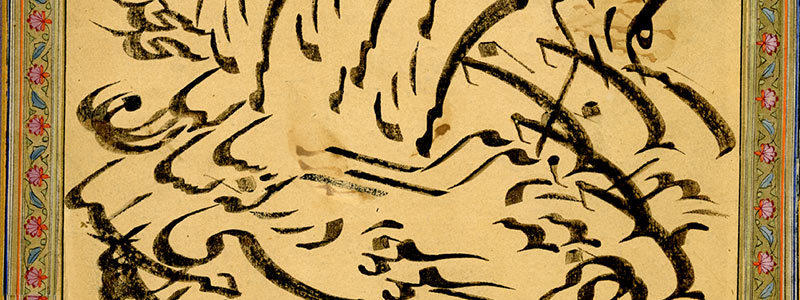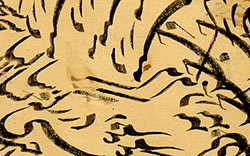Mohammad Rezā Kalhor, son of Mohammad Rahim, was born in 1829 CE in Kermanshah. In his youth he demonstrated skill in archery and horseback riding while also excelling in his studies with Mirza Mohammad Khonsari, a teacher he soon outstripped in the mastery of the Nasta‘liq and Shakastah scripts. While Kalhor wrote in resin gum ink, he also prepared writing for stone printing, and consequently discovered a new style of writing. This style utilized a thick ink that was unsuitable for printing, a technique that many people found appealing. On a number of occasions, Kalhor also produced some books (such as Fayz al-Domu‘) in two different fashions, one using the printing press and one by writing in resin gum ink.
He is notable for having prepared many books and publications for stone printing. Alongside this, he created many works of Siyāh Mashq which differed greatly from the famous works of Mir Hosayn and Gholām Rezā. From examining his extant works of Siyāh Mashq, it appears that in these works he was merely practicing (in the way that Siyāh Mashq was originally used) in order to warm up his hand for writing calligraphy.
Kalhor trained many students such as Zayn-al-‘Ābedin Sharif Qazvini, Sayyed Mortezā Najm-Ābādi, Mortezā Borghānī, Sayyed Mahmud Sadr-al-Kottāb, Mohammad Rezā Safā, Nasro’llāh Hakkāk, and Sayyed Mahmud Sadr-al-Ma‘āli, which contributed to the spread of his style in the modern era. Kalhor died in Tehran in 1892 CE and was buried in a cemetery located in the Hasan-Ābād neighborhood.

